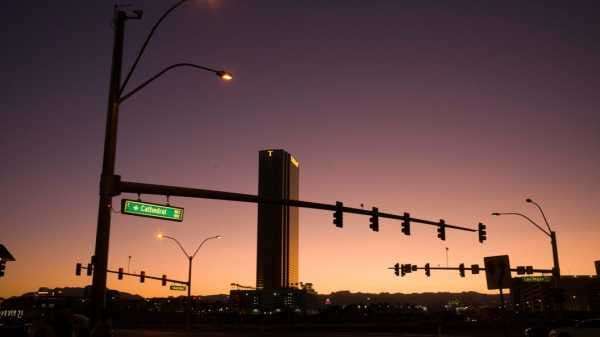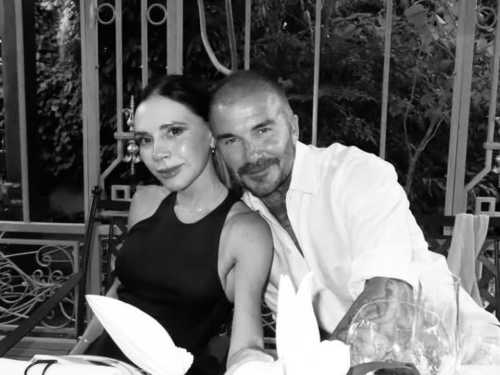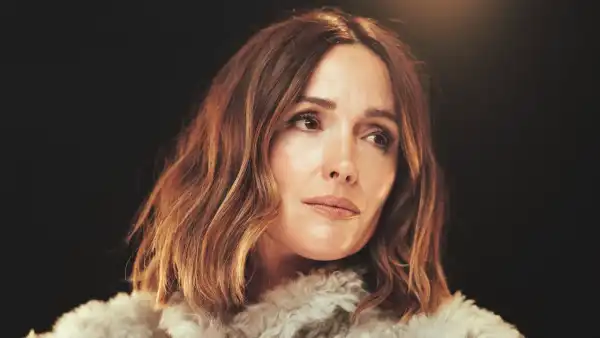
A few weeks ago, I spent time with a woman my age who, like me, was born here in Southern California, grew up with many siblings and not much money, and received an annual pair of ungainly Toughskins jeans, from Sears. We smiled shakily about hating those jeans. We also spoke about her youngest daughter, who went to high school with my youngest daughter, who prepared for her life with children’s theatre and cheerleading, who had planned to marry the boy she met in high school, who had dressed in festival clothes and put on makeup and taken Instagram photos and then walked onto a concert ground last year in Las Vegas, where a musician was singing as she was shot and killed, falling into the arms of her boyfriend.
The day after my talk with the girl’s mother, my neighbor Adolph Martinez told me that he’d been to a fund-raiser at his regular sports/bikini bar for another woman, who had been shot in the neck in the Las Vegas attack. Her companion is in the same motorcycle club as Martinez’s friends. The woman sat in a wheelchair at the bar. She cannot work or walk.
At the Elks Lodge on my street, where my friends and I drink and dance on Friday nights, a memorial gathering was recently held for more than a hundred survivors and families of people who died in Las Vegas. Many were women—women who were shot in the cheek, the jaw, the chest, the neck. One woman, a hair stylist, was shot in the hands, and cannot work now. One woman lost her son, for whom she was “wingmom,” and feels immense guilt because he left for the concert while she was still getting ready at their hotel. He died there without her beside him.
I think about guns all the time. While driving on the freeway to Los Angeles, I see people battling with their vehicles, glaring at each other from windows, glaring at me, and I think of how people shoot from cars with numbing regularity, at other drivers who’ve cut them off or made a rude gesture, at people stopped on the shoulder, at people chosen at random, while moving at rapid speed. In the park at the end of my block, I see cars slowing down and think that someone might not like our clothes, our dogs, our soccer drills. While teaching in large auditoriums, or speaking in large auditoriums around the country about writing and violence and history, I worry that someone might not like what I am saying. This year, I did not go to the Women’s March, because I was apprehensive about who might take offense at that gathering. I have not attended a large concert in years. For two decades, members of my family, most of whom are African-American, along with hundreds of other people, have walked a four-mile route along a wide avenue for our local Martin Luther King, Jr., memorial, and I did so in January, but I didn’t tell my cousins or brothers-in-law what I was thinking as we passed people who watched us from their vehicles.
In October of 2015, at Umpqua Community College, in Oregon, a young man fatally shot a professor and eight students, and wounded eight other people. He walked deliberately around the classroom, asking his victims whether they were Christians. Days later, I went to a large university to be a writer-in-residence, in a state where I’d never been with a strong gun culture. I was far from my daughters and family. The first day, while I was walking on a path along the river, a young white kid with long hair wearing a ball cap and camouflage jacket walked toward me, disdain clear on his face, which twisted as he looked at me—my age? My hair? My clothes? His hands were in his pockets. I was suddenly panicked, thinking that he could want to replicate the most recent shooting.
In Santa Barbara, the killer planned his attack for two years, buying weapons and ammunition, practicing at gun ranges, before setting out on a late spring evening, in 2014, with a triple-vanilla latte and a carful of guns, headed to a street lined with sorority houses. He knocked on the sorority house where my eldest daughter’s best friend had lived before graduating, planning annihilation of the women inside. When no one answered, he opened fire on three women on the sidewalk, then fired into a coffee shop, a deli, a pizzeria, at bicyclists and pedestrians and skateboarders. He fired fifty-five times, leaving three people dead and thirteen wounded, in eight minutes. He had five hundred and fifty unspent rounds left when he shot himself. His manifesto detailed his rejections at romantic love.
I remember the Virginia Tech shooting, in 2007, after which we professors were told to pay closer attention to our students’ writing assignments, looking for signs of potential mass shooters. I remember Aurora, in 2012, because the shooter had graduated from my university, and I still envision him walking on our campus, passing us by.
The male shooter in San Bernardino, in 2015, was born in Illinois but came to Riverside when he was very young; he went to a local high school, was two years older than my eldest daughter, and so I imagined him sitting across from us in the bleachers at basketball games for some of those four years of our lives. After graduation, he and his childhood best friend planned to bomb the cafeteria at Riverside Community College, two blocks from my house, where both of my brothers-in-law were custodians at the time. Then he and the friend would stage a mass shooting at drivers on the 91 freeway. Their hiding place on the road bank would have been near the Cosmetology Building, where my brother-in-law parks his golf cart and visits with the students who wheel their styling equipment and makeup to night session.
Instead, the San Bernardino shooter married, and he and his wife chose as a target his employee holiday party at a nonprofit center. They had military weapons, accessories. Many of us in this area were terrified, because we knew people inside that building—some were graduates of U.C. Riverside. That day, I watched the shooters die. I had never seen anything like it: on live television, a gun battle between the female shooter and more than twenty officers, armored-response vehicles of military grade and, finally, a motorized battering ram and pole, which police used to drag out the limp body and lay her on a street I have driven by many times.
My daughters call me to confess new fears—of walking on campus, of being in church. My youngest daughter, last year after Charlottesville, left church in Los Angeles mid-service because she was suddenly terrified of two young white men with shorn heads who came in at an odd time. Days later, she was afraid driving home on the freeway when she saw a stopped motorcycle, then another, sure the drivers were planning to open fire on the cars.
For weeks, I have been teaching novels of war. My students are also afraid of random places and people, of the unseen gun. We keep returning to this passage from “Fools Crow,” by James Welch, which describes a warrior preparing for battle: “He had burned the braided sweet grass and passed the smoke over his body; he had called to the Above Ones to give him strength, to take pity on him, to make him successful . . . and now, deep within the folds of the robe, he sang his death song.”
The men and women heading to church in Charleston knotted their ties and buttoned their collars. The men and women going to a night club in Orlando painted their faces and clasped jewelry around their throats. The women of all ages in Las Vegas styled their hair in long curls, as is the fashion for country-music fans; I see them every day here in Southern California, where a large number of those killed and wounded in the attack were from. They painted their fingernails and put on boots and hats, and America saw them running in terror a thousand times on television, dragging out wounded friends and strangers, carrying bleeding people on their backs, pushing them over chain-link fences to safety, shielding them with their own bodies while the bullets flew from the sky above.
The mother of the young woman killed that day said to me, “I don’t even want to talk about guns. No one in the government wants to talk about guns. The—” She wiped again at her eyes, and so did I. “The bump stock. When everyone started talking about how that’s what he used and it should be outlawed, the sales went up like crazy.”
Every day when I drive to work, I pass the cosmetology building’s parking lot. Would the two shooters have aimed at the young women and men headed inside to paint faces? I think about how close I’ve come to death.
At seventeen, I was locked in a bathroom at a party and attacked by a crazed stranger who left bloody handprints on my sweater; I survived because two drunk boys forced open the door, needing to use the toilet. At twenty-nine, I was picking up my baby daughter from my mother-in-law’s house and a bullet sang past me in the driveway, intended for a young man standing nearby. I have been terrified at close range. This is different.
Here in the city where I was born, many of my friends and relatives—white, black, Chicano and Mexican-born, Salvadoran, Asian-American, and Asian-born—have guns. Store owners and tow-truck drivers and corrections officers and cement contractors and auto mechanics and sheet-metal workers. I am not afraid of them. The other night, a neighbor who works nights along the border reminded me at midnight to close my car window; he carried his sidearm. When Donald Trump was elected President, two friends offered me handguns—they envisioned right-wing violence against neighbors and families like ours.
The first image I saw on television as the Las Vegas shooting unfolded was of a smiling young woman in a letterman jacket. A cheerleader. A jacket of the same kind, belonging to my middle daughter, hangs in a closet at my house, pressed tightly between fifteen prom dresses with sequins and rhinestones and hems brushing the floor. I stand in the closet toughing those stiff leather sleeves, thinking of the parents like me—countless hours spent driving children to practice, buying snacks and making late dinners, waiting in deserted parking lots, going to games or debates or plays, listening to children cry or laugh about their lives, combing their hair and watching while they wash their faces, then hanging up their jackets, those leather sleeves cold with the night, now that they were safely home.
We are a nation of young men and middle-aged men and older men who feel burning grievances and have easy access to bullets. The word “massacre” is now used as if it is not shocking. It is everyday. I think often of a haunting few lines from Proust: “We say that the hour of death cannot be forecast, but when we say this we imagine that hour as placed in an obscure and distant future. It never occurs to us that it has any connection with the day already begun or that death could arrive this same afternoon, this afternoon which is so certain and which has every hour filled in advance.”
On Valentine’s Day, as I wrote these last lines, my youngest daughter called to tell me there had been another school shooting—this time in Parkland, Florida.
Sourse: newyorker.com






